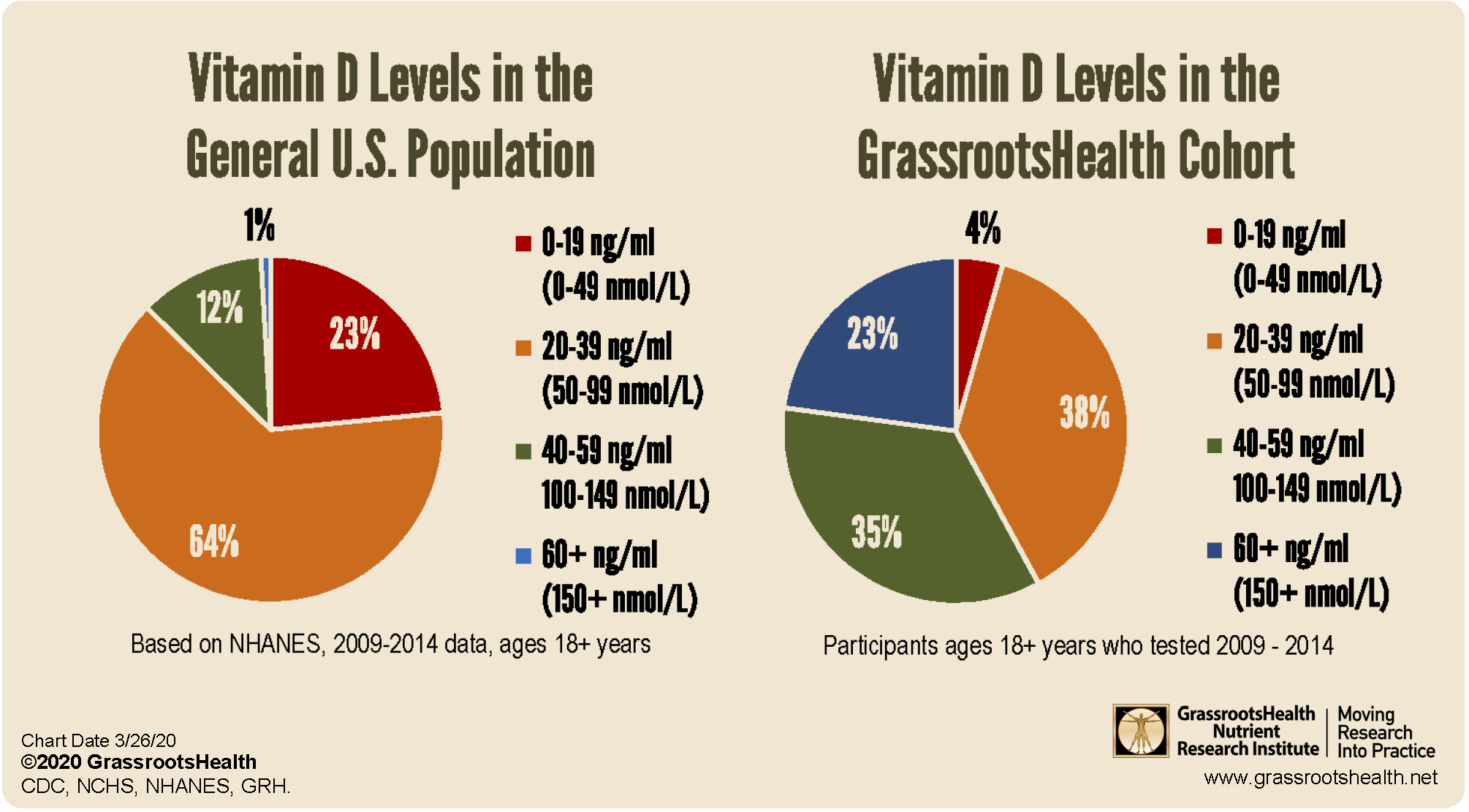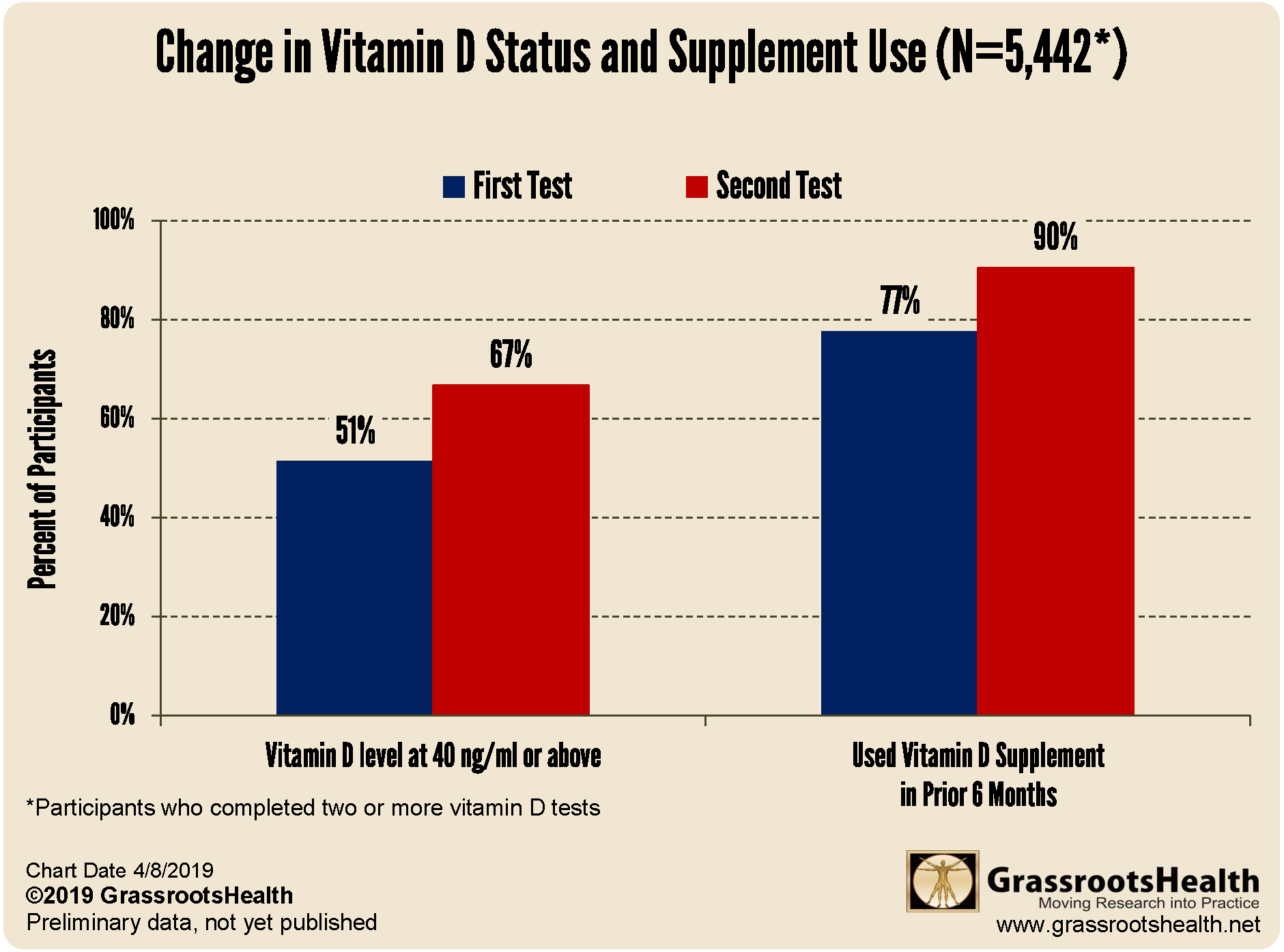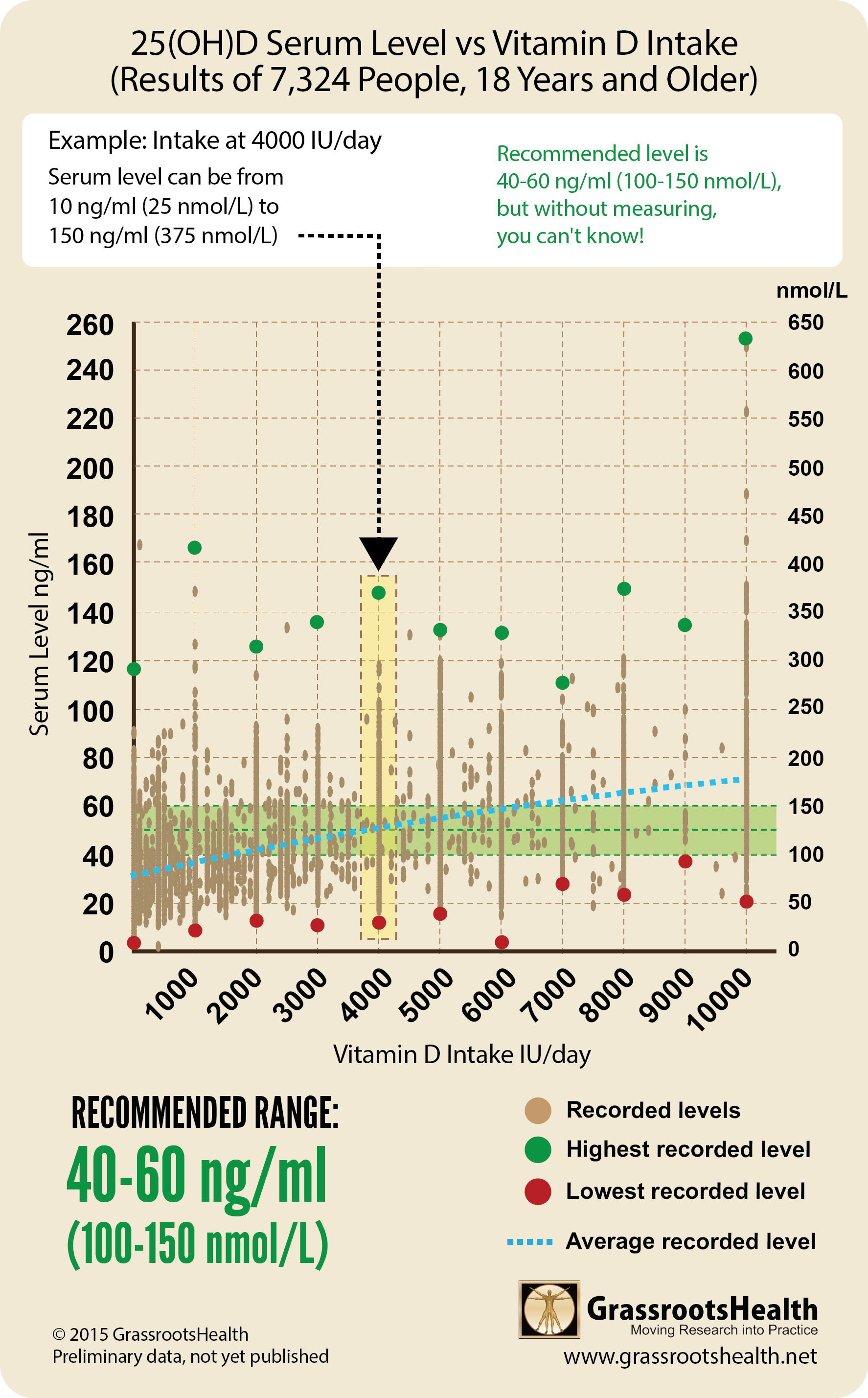Published on June 17, 2020
 Our vitamin D myth busting series has covered several important topics, with our last possibly being the most important of all – an explanation of why the current recommendation of 600 IU vitamin D per day, along with a target vitamin D serum level of 20 ng/ml, is simply not enough for general health. Today’s post addresses another common myth – that the only people who should be testing their vitamin D levels are those who are considered “high-risk” for deficiency. While there is certainly a higher risk of vitamin D deficiency among certain individuals, such as those with darker skin, higher BMI, and individuals of older age, other factors that are less obvious play a large part in how each person responds to all inputs of vitamin D, making it useful for everyone to test their levels. In fact, nearly everyone could be considered at “high-risk” for deficiency.
Our vitamin D myth busting series has covered several important topics, with our last possibly being the most important of all – an explanation of why the current recommendation of 600 IU vitamin D per day, along with a target vitamin D serum level of 20 ng/ml, is simply not enough for general health. Today’s post addresses another common myth – that the only people who should be testing their vitamin D levels are those who are considered “high-risk” for deficiency. While there is certainly a higher risk of vitamin D deficiency among certain individuals, such as those with darker skin, higher BMI, and individuals of older age, other factors that are less obvious play a large part in how each person responds to all inputs of vitamin D, making it useful for everyone to test their levels. In fact, nearly everyone could be considered at “high-risk” for deficiency.
What is the Chance that You Are Vitamin D Deficient?
GrassrootsHealth has used the National Health and Nutrition Examination Survey (NHANES, 2009-2014) data to look at rates and trends of vitamin D deficiency in the United States in both adults and children and how it compares to the GrassrootsHealth cohort (US participants who tested anytime in 2009 through 2014). With recent NHANES data sets, lab results from across the years have been standardized when different lab testing was used, allowing for a more accurate comparison. Below are a few illustrations of vitamin D levels in the US population, compared to those of participants in the GrassroostHealth cohort.
The pie charts above clearly show the difference in distribution in vitamin D levels among adults. Almost 90% of U.S. adults in the NHANES data set have a vitamin D level below the recommended range of 40-60 ng/ml! Those in the GrassrootsHealth cohort have significantly higher levels than those in the NHANES cohort; yet approximately 42% of GrassrootsHealth participants were also below that range.
Supplementation Does Not Always Provide Expected Change
Why not just take a supplement? Among 5,442 GrassrootsHealth participants who completed at least two vitamin D tests, the chart below shows that approximately half (51%) achieved 40 ng/ml on their first test compared to two-thirds (67%) on their second test – leaving 1/3 of those who re-tested still below the 40 ng/ml target level.
Additionally, we often need to adjust the dose we are taking to suit our bodies’ needs and the only way to know that is to measure. The median vitamin D supplement intake amount increased from 2000 IU/day on the first test to 4000 IU/day on the second test. Among those who were less than 40 ng/ml on their first test, a majority increased their supplemental intake amount (76%) and their vitamin D level (81%) between their first and second tests.
Why Supplementing Without Testing is NOT the Best Guide for Your Personal Health
When it comes to how vitamin D supplementation affects vitamin D serum levels, it is important to recognize the wide range of serum level responses that can be produced at any specific supplementation amount, as illustrated in the chart below. For example, with a supplemental intake of 4000 IU/day, serum levels were observed from 10 ng/ml (25 nmol/L) to 150 ng/ml (300 nmol/L). It is because of this wide range in response that testing vitamin D levels, versus blind supplementation, is the only way to know how you respond to the supplements you are taking.
The GrassrootsHealth cohort is a great example of how the simple act of measuring vitamin D levels, combined with taking the necessary steps to achieve a target level, results in an overall improvement in vitamin D levels compared to the general population. A very big thank you to all D*action participants who have contributed to this research.
Are you blindly supplementing with vitamin D?
Testing your vitamin D level regularly and taking steps to keep it at a target level of 40-60 ng/ml (100-150 nmol/L) is important for all stages of health. Through GrassrootsHealth Nutrient Research Institute, you can also test your omega-3 status, inflammation levels, and levels of essential nutrients and toxins. Find out your levels today! Log on to the shop (click the link below) to get your tests and see for yourself if your level can be improved.
Is it True?
Our “Vitamin D Myths” series will continue to provide information and resources to answer the question, “Why should I care about vitamin D?” and to help dispel the myths and misconceptions surrounding it that may be preventing you and others from accepting it as an essential component to health. We will also discuss other nutrients essential to the function of vitamin D (and vice versa) within the body that should not be ignored.
Vitamin D is necessary for multiple functions within the body and should not be ignored, but has the hype about vitamin D and its role in the body’s response to COVID-19 been over-exaggerated? What concerns about vitamin D are valid, and which are not? We want to provide you with evidence-based information to help you decide what vitamin D action to take, if any, for your own health.
We want to hear from you!
Is there a particular ‘myth’ you have heard about vitamin D? Or, something you have read or been told that makes you question whether vitamin D ‘deserves’ so much attention? Or whether you should be taking it and how much? Share with us by emailing jen @grassrootshealth.org what you have heard that makes you question vitamin D so that we can consider addressing it in our newsletters.
Do You Have Enough Vitamin D to Support a Healthy Immune System?
Do you know what your vitamin D level is? Be sure to test today to find out, and take steps to keep it within a target of 40-60 ng/ml or 100-150 nmol/L! Give your immune system the nutrients it needs to support a healthy you and protect yourself from unnecessary diseases.
Through GrassrootsHealth Nutrient Research Institute, you can also test your essential elements magnesium, copper, zinc and selenium, toxins such as lead, mercury and cadmium, as well as your omega-3 levels, inflammation levels and thyroid stimulating hormone (TSH) level. Find out your levels today! Log on to the test selection page (click the link below) to get your tests and see for yourself if your levels can be improved.
Make sure you track your results before and after, about every 6 months!
How can I track my nutrient intake and levels over time?
To help you track your supplement use and nutrient levels, GrassrootsHealth has created the Personal Health Nutrient Decision System called
For each specific supplement, you can track what days you take it, how much, and many other details. This will help you know your true supplemental intake and what patterns of use work for you to reach and maintain optimum nutrient levels. Check it out today!










